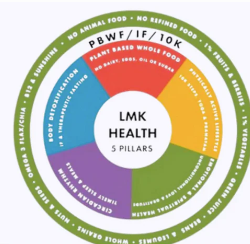Have you ever wondered why society is more focused on finding cures than on identifying causes? The answer is simple: there’s no profit in finding causes. Consequently, little funding is directed toward research in that area. In fact, if causes were found, it could negatively impact industries like food, pharmaceuticals, and healthcare. It’s evident that the pharmaceutical industry often funds research that leads to more patients or greater drug sales. Here are some observations:
1. Find New Cures
The pharmaceutical industry is motivated to find cures because that’s profitable. However, they are equally interested in identifying new diseases. As any business student knows, there are two key strategies to grow a business: (1) find new applications for existing products—such as statin drugs, which initially were used by only 0.2% of the population with Familial Hypercholesterolemia, a genetic disorder and (2) Find new products for the existing client base. This requires finding new diseases.
2. Find New Diseases
Another strategy is to develop drugs for conditions not traditionally considered diseases. For example, high cholesterol (over 200) was redefined as a disease with the help of doctors, allowing the FDA to approve it as a treatable condition. FDA approval is crucial, as it enables insurance companies to cover the drugs, boosting their sales. Statins, which address cholesterol levels, are now on track to become the first trillion-dollar drug, targeting a problem that didn’t exist until four decades ago.
It may surprise you that many drug companies work on cures for conditions that may not even exist. These projects and related marketing campaigns begin years in advance. Dr. Adriane Fugh-Berman, a Georgetown University professor, studies such industry practices and notes that it takes around seven years to create both a new drug and a new disease.
Statins for cholesterol (above 200) in healthy individuals are a prime example. Other conditions such as hyperhidrosis (excessive sweating), menopausal estrogen therapy, and low testosterone have followed similar paths. Marketing campaigns creatively suggest that normal symptoms, like sweating or post-lunch drowsiness, may be due to deficiencies or abnormalities.
In 2016, I met Dr. Fugh-Berman, director of “Pharmed Out,” an organization established by Georgetown University Medical Center to examine pharmaceutical marketing practices. Dr. Fugh-Berman has published extensively on the pharmaceutical industry’s influence on physicians, off-label drug promotion, ghostwritten articles, and invented diseases. “Pharmed Out” also created a portal where patients could see if their doctor received pharmaceutical industry payments for prescribing drugs like statins. Dr. Fugh-Berman was an expert witness in the opioid lawsuit that resulted in a settlement exceeding $8 billion against major pharmaceutical companies.
Fugh-Berman testified about how industry narratives became “conventional wisdom,” leading to massive growth in OxyContin sales, from $48 million in 1996 to over $3 billion in 2009.
PBS News reported that these deadly consequences “didn’t happen overnight.” Dr. Fugh-Berman explained that pervasive marketing influenced conversations among patients, doctors, medical students, and instructors. One strategy involved rebranding substance use disorder as “pseudo-addiction”—a condition in which patients exhibiting signs of addiction were instead advised to increase their opioid dosage. Although fewer doctors now prescribe opioids compared to the mid-2010s, PBS reports that opioid marketing still directs patients toward these drugs.
Examples of Marketing Campaigns
Botox for Hyperhidrosis
“Severe underarm sweating is embarrassing and challenging for sufferers.” This award-winning campaign by Allergan’s Botox provided dermatologists with tools to inform patients that severe sweating, if unresponsive to topical treatments, can be treated as a medical condition.
Cholesterol-Lowering Statin Drugs
Advertising for cholesterol-lowering statins seldom addresses causes, such as diets high in animal products and low in fresh produce. Instead, ads emphasize drug interventions:
“When diet and exercise are not enough, adding Lipitor may help” (2009)
“When diet and lifestyle weren’t enough for me. I stopped kidding myself”(2010)
“I didn’t think I could have a heart attack. I exercised, I ate well, but I just knew that wasn’t enough” (2012)
“Are you kidding yourself? If you have high cholesterol, you may be in deeper water than you think.”
ACCORD Study & J-CURVE
In their quest to increase drug sales, pharmaceutical companies funded the ACCORD study, aiming to show that tighter symptom control was better than moderate control, which would lead to higher medication doses. However, the study’s results contradicted this, leading to its early termination and establishing the “J-Curve,” which supports more relaxed medication guidelines for conditions like diabetes and hypertension.
Early Detection
Pharmaceutical companies also fund studies supporting the benefits of early detection, resulting in classifications like Pre-Diabetes or Pre-Hypertension. These findings drive drug sales and increase patient numbers for healthcare providers, though there’s limited evidence that such early interventions save lives outside certain diseases, such as cancer.
To read the article on Times of India Click here.


Share and get 15% off!
Simply share this product on one of the following social networks and you will unlock 15% off!